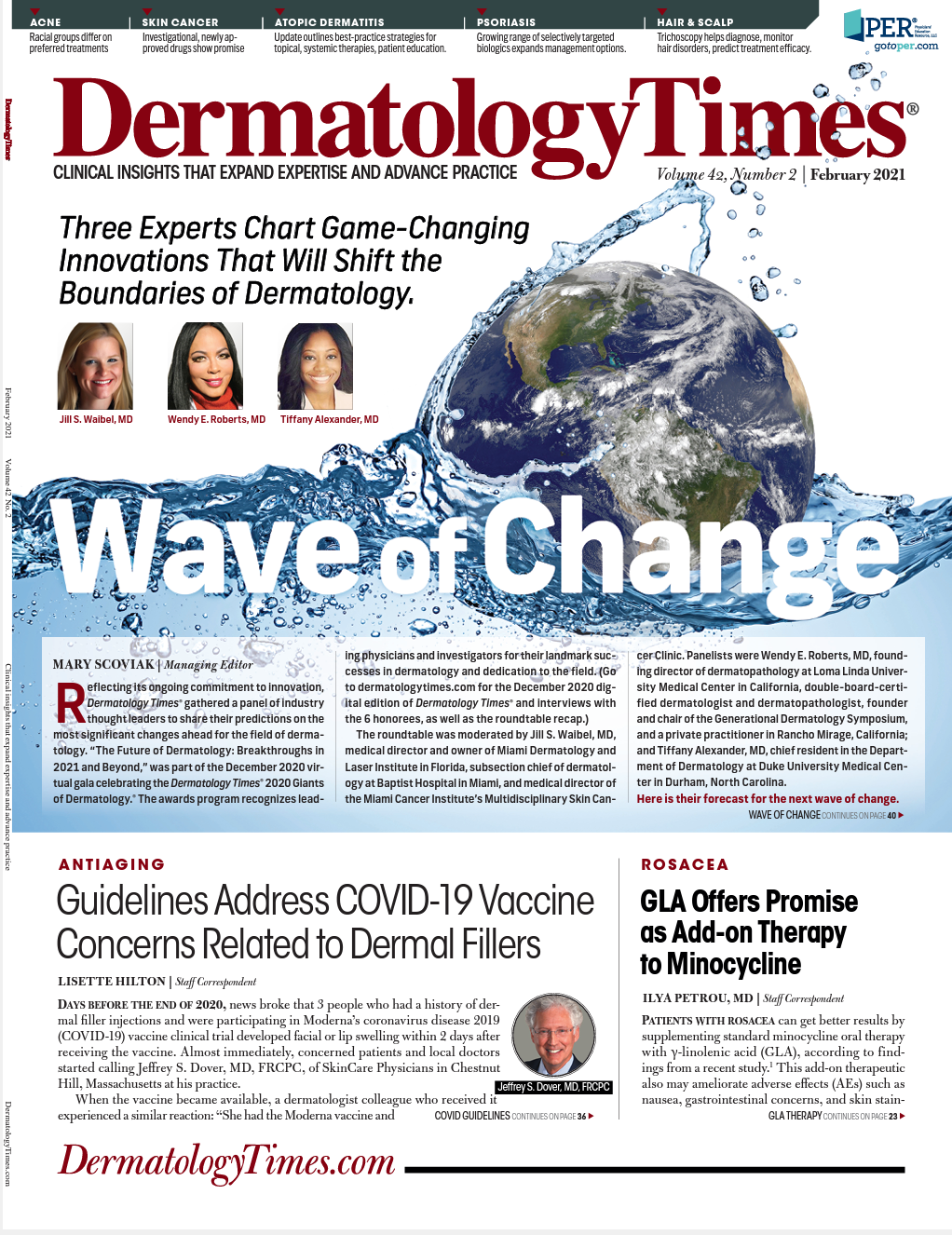- Case-Based Roundtable
- General Dermatology
- Eczema
- Chronic Hand Eczema
- Alopecia
- Aesthetics
- Vitiligo
- COVID-19
- Actinic Keratosis
- Precision Medicine and Biologics
- Rare Disease
- Wound Care
- Rosacea
- Psoriasis
- Psoriatic Arthritis
- Atopic Dermatitis
- Melasma
- NP and PA
- Skin Cancer
- Hidradenitis Suppurativa
- Drug Watch
- Pigmentary Disorders
- Acne
- Pediatric Dermatology
- Practice Management
- Prurigo Nodularis
- Buy-and-Bill
Publication
Article
Dermatology Times
Legal Eagle: Can I Terminate an Employee Who Has COVID-19?
Author(s):
In this month's Legal Eagle column, David Goldberg, MD, JD, explains if you can terminate an employee who's COVID-19 diagnosis has negatively affected your practice and led to substantial financial losses.
Jane Doe, a nurse in the busy dermatologic practice of Dr Skin, plays an active assistant role in all aspects of the practice. Skin recently sold his practice to a private equity group, Drs Best Group, agreeing to stay on for 2 years as an employee physician to introduce his patients to the Drs Best Group providers. Six months after the sale, Doe undergoes testing for coronavirus disease 2019 (COVID-19). The results are positive. The laboratory director, a physician who has known Skin for 20 years, calls Skin with the results, which Skin subsequently passes on to the CEO of Drs Best Group. Doe becomes quite sick but fully recovers; however, she has multiple post-COVID-19 maladies. The word gets out about her illness, and patients are frightened to return to the office, which leads to substantial financial losses for the practice.
The CEO, who is not a doctor, wants to terminate Doe because of her negative impact on the practice. He has read past Dermatology Times® Legal Eagle columns and knows that he in unable to terminate her simply because of the consequences to his practice after word got out that she brought COVID-19 into the office. He places Doe on paid leave until he determines his course of action.
Ultimately, the practice offers Doe a clerical job in a hidden back office, with no direct patient interaction, at 75% of her previous salary. She declines and files a lawsuit against Drs Best Group under the Americans With Disabilities Act (ADA). What will happen?
The ADA, which became law in 1990, was drafted to protect the rights of disabled citizens in a constantly changing society. The act prohibits discrimination “against a qualified individual with a disability.” A disabled individual is defined as any person who has a physical or mental impairment that substantially limits at least 1 major life activity.
Unlike previous antidiscrimination laws, the ADA applies to the professional office of a health care provider. There is no violation if the terminated employee poses a direct threat, which is defined as “a significant risk to the health or safety of others that cannot be eliminated by a modification of policies, practices or procedures, or by the provision of auxiliary aids or services.”
To file a claim of discrimination under the ADA, a plaintiff first must prove that they are disabled. Next, a plaintiff must prove that they are a qualified individual, defined as one who is able to “with or without reasonable accommodation...perform the essential functions of the employment position that such individual holds or desires.” Next, the plaintiff must show that discrimination occurred and was based on the disability. Court decisions have found that accommodation is reasonable as long as it does not impose undue hardship. If the accommodation requires what the ADA describes as “a fundamental alteration in the nature of the program,” it would be unreasonable.
Proof of disability is not as straightforward as it seems. No court has yet determined whether the long-term impacts of COVID-19 are a disability. Only with time and the evolution of COVID-19–related court cases will we have an answer.






